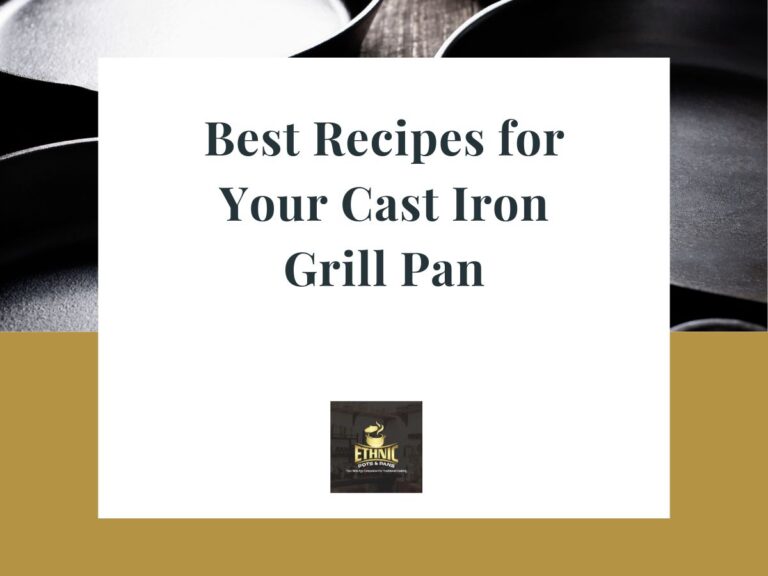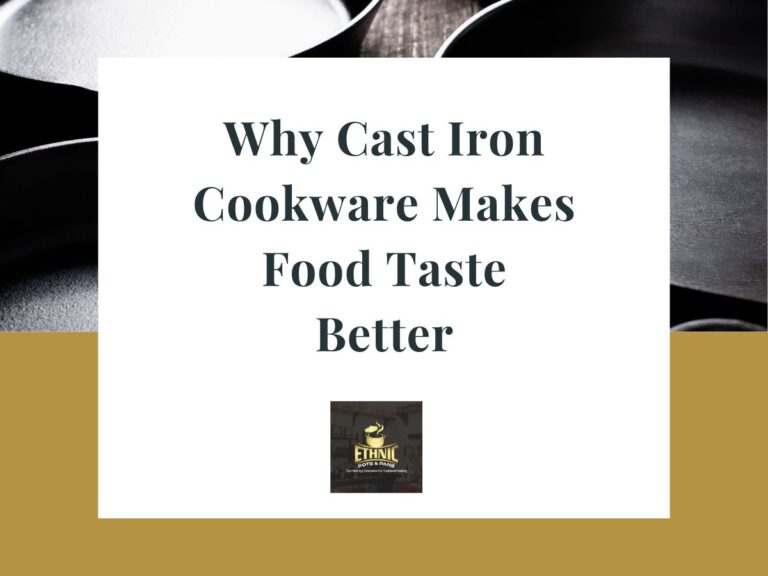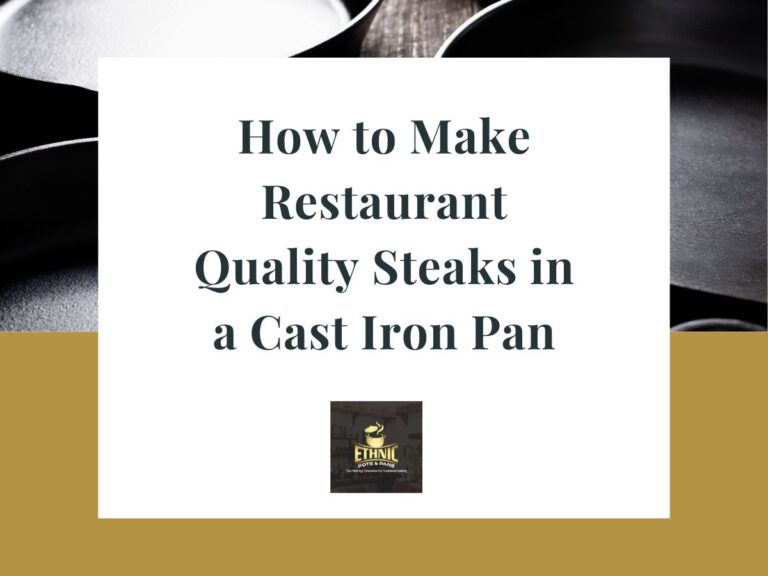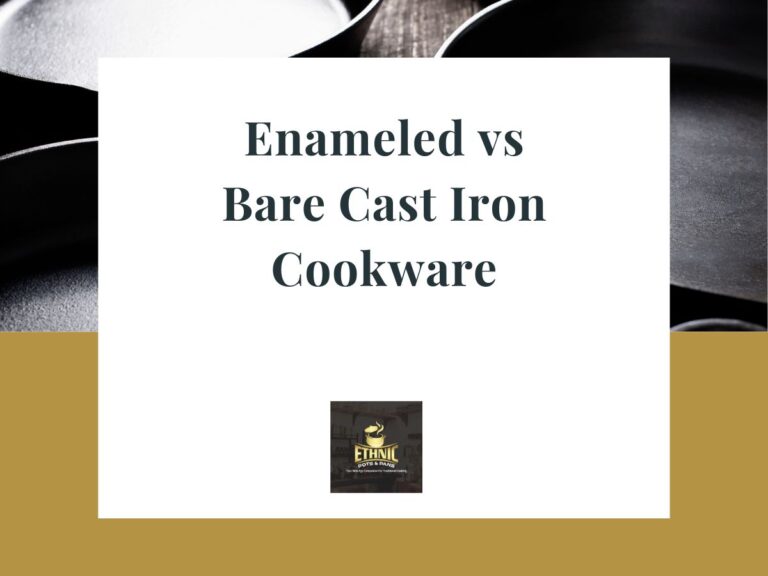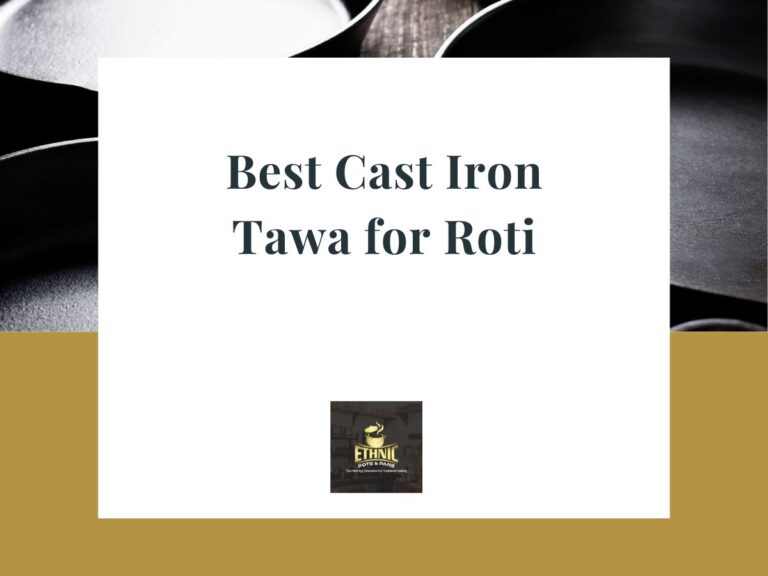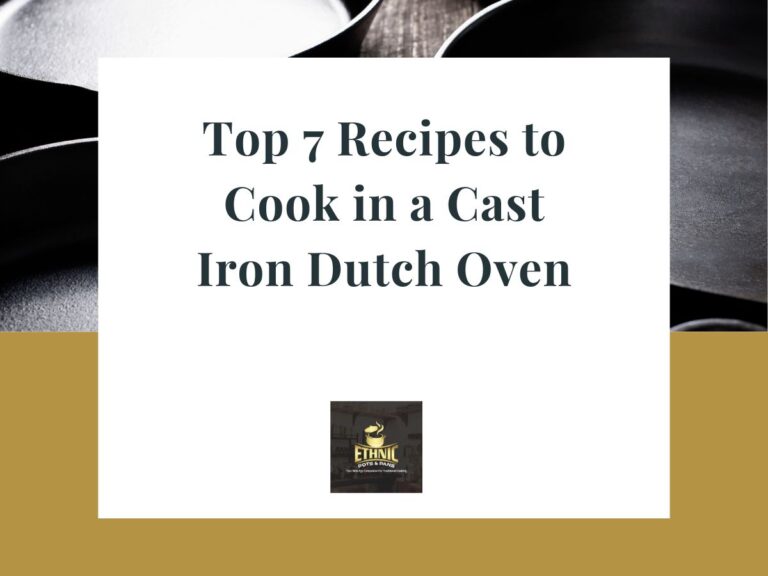Cast iron cookware is an essential kitchen tool for many home cooks and professional chefs alike. Known for its durability, excellent heat retention, and ability to enhance the flavor of food, cast iron pans and skillets can last a lifetime—if properly cared for. One of the most crucial aspects of maintaining cast iron is proper storage. Storing your cast iron cookware incorrectly can lead to rust, damage to the seasoning, or even potential scratching or breakage.
At Ethnic Pots and Pans, we believe that taking care of your cookware doesn’t end after cooking. Proper storage is just as important as seasoning and cleaning. In this guide, we’ll cover the best practices for storing cast iron cookware to ensure it stays in perfect condition for years to come.
Why Proper Storage Matters
Before diving into the best practices, it’s important to understand why proper storage of cast iron cookware is essential.
– Prevention of Rust: Cast iron is susceptible to rust if exposed to moisture for extended periods. Storing the cookware in a dry, well-ventilated area helps prevent rust from forming.
Protecting the Seasoning: Cast iron pans develop a non-stick surface through a process called seasoning. Improper storage can cause the seasoning to wear away or damage the pan.
Avoiding Scratches and Damage: Storing cast iron without care can scratch or chip the surface, compromising its performance and durability.
By following the right storage practices, you’ll ensure your cast iron remains a valuable part of your kitchen for years.
Best Practices for Storing Cast Iron Cookware
1. Clean and Dry Your Cast Iron Thoroughly
The most important step before storing cast iron cookware is to ensure it is thoroughly cleaned and dried. Water is the primary cause of rust, and even a small amount left on the surface can lead to problems.
– How to Clean: After each use, clean your cast iron pan with warm water and a gentle scrub. Avoid using soap unless you’re about to re-season the pan. If food is stuck to the surface, use coarse salt as an abrasive to scrub it away.
– How to Dry: Once the cookware is clean, it’s important to dry it completely. Use a clean towel to wipe away any moisture, then place the pan on the stove over low heat for a few minutes to evaporate any remaining water.
Pro Tip from Ethnic Pots and Pans: Always dry your cast iron with heat before storing it. This ensures no moisture is left on the surface, preventing rust formation.
2. Apply a Thin Layer of Oil Before Storage
After drying your cast iron, apply a thin layer of oil to the surface. This keeps the seasoning intact and acts as a barrier against moisture in the air.
– Which Oil to Use: Use a neutral oil with a high smoke point, such as vegetable oil, flaxseed oil, or grapeseed oil. Apply a small amount of oil to a cloth or paper towel and rub it evenly over the entire surface of the cookware.
– How Much to Use: Be sure to apply only a thin layer of oil. Excess oil can result in a sticky residue that will need to be cleaned off before the next use.
3. Store in a Dry, Well-Ventilated Area
Cast iron should always be stored in a dry, well-ventilated area. This helps prevent moisture buildup, which could lead to rust. Some good places to store cast iron cookware include:
– Kitchen Shelves: Storing cast iron on an open kitchen shelf is ideal, as it allows air to circulate the cookware. Make sure the shelf is sturdy enough to hold the weight of the cast iron, especially if you have multiple pieces.
– Hanging Racks: If you have the space, consider installing a hanging rack in your kitchen. Hanging your cast iron cookware is not only convenient but also prevents any stacking or scratching.
Pro Tip from Ethnic Pots and Pans: If your kitchen is prone to humidity, consider placing a moisture absorber, like a small packet of silica gel, near the cast iron to keep moisture at bay.
4. Avoid Stacking Without Protection
If you need to stack multiple pieces of cast iron cookware, be sure to place a protective layer between each piece to avoid scratching the seasoning. Here’s how to stack cast iron correctly:
– Use Paper Towels or Cloth: Place a paper towel, dishcloth, or pan protector between each pan to prevent scratches or damage. This will also help absorb any moisture and keep the pans from rubbing against each other.
– Avoid Direct Contact: Cast iron can be heavy, and stacking them directly can cause damage over time. If possible, avoid stacking altogether, or at least minimize the amount of cookware stacked in one pile.
5. Keep the Lid Off
If your cast iron cookware comes with a lid, it’s best to store the pan and the lid separately. Storing the cookware with the lid on can trap moisture inside, leading to rust. If you must store the lid with the pan, place a paper towel or cloth between the pan and the lid to allow air circulation.
– How to Store Lids: You can store lids upright on a lid rack or place them next to the cookware on a shelf. Just be sure they aren’t placed directly on the pan to avoid moisture buildup.
6. Use a Stovetop for Short-Term Storage
If you use your cast iron pan frequently, you can store it directly on your stovetop. This keeps the pan within easy reach and reduces the need for stacking or putting it away after every use. Just make sure the stovetop is dry and free of moisture.
– Stovetop Storage Tips: If you store the pan on the stovetop, remember to wipe it down regularly to prevent dust buildup. You can also apply a light layer of oil to keep it well-seasoned and ready for use.
How to Avoid Common Cast Iron Storage Mistakes
Proper storage is key to maintaining your cast iron cookware, but there are common mistakes that people often make. Here’s what to avoid:
1. Don’t Store in a Damp Environment
Moisture is the biggest enemy of cast iron. Storing your cookware in a damp area, such as a humid pantry or a cabinet under the sink, can lead to rusting. Always choose a dry, cool spot for storage.
2. Don’t Leave Food in Cast Iron Pans
Leaving food in your cast iron pan for extended periods can break down the seasoning and introduce moisture to the surface. After cooking, always transfer the food to a different container and clean the pan immediately.
3. Don’t Store Cast Iron With a Sticky Surface
If your cast iron has a sticky surface, it’s likely due to too much oil being applied during seasoning or storage. Before storing, make sure the pan is smooth to the touch. If it feels sticky, wipe off the excess oil or reheat the pan to absorb the oil into the seasoning.
Why Proper Storage Extends the Life of Cast Iron
Storing cast iron properly not only prevents rust and damage but also helps build up the seasoning layer over time. A well-seasoned cast iron pan will become more non-stick with use, making cooking easier and enhancing the flavor of your dishes.
At Ethnic Pots and Pans, we emphasize the importance of caring for your cast iron cookware with proper storage techniques. By following these best practices, you can ensure your cast iron remains in excellent condition for years to come, allowing you to pass it down through generations.
Conclusion
Proper storage is an often overlooked but crucial aspect of maintaining cast iron cookware. By cleaning and drying your pan thoroughly, applying a protective layer of oil, and storing it in a dry, well-ventilated area, you can prevent rust and damage while preserving the pan’s seasoning.
At Ethnic Pots and Pans, we provide high-quality cast iron cookware designed to last a lifetime. With the right storage practices, you can keep your cast iron in perfect condition, ensuring it continues to serve you in the kitchen for many years. So, take a little extra care in how you store your cast iron, and enjoy the benefits of this versatile cookware for generations.

